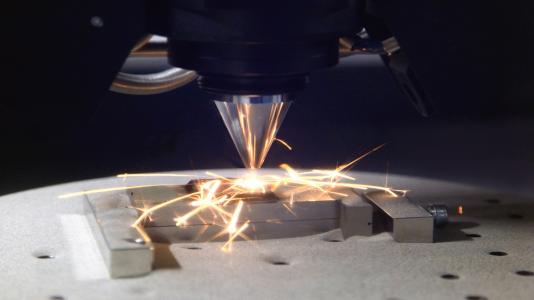Scientists double down on machine learning to improve 3D printing

A team of scientists from Argonne National Laboratory, Massachusetts Institute of Technology (MIT) and University of Chicago built a smart machine-taught network to detect defects in metal additive manufacturing. This development interests the nuclear industry because it can help with quality control of 3D printed parts. Advanced 3D printing methods like laser powder bed fusion (LPBF) selectively melt and fuse together microscopic metallic powder. This is a useful and cost-effective approach to fabricating the one-of-a-kind, complex-shape, high-strength metal parts the nuclear industry usually needs. However, the LPBF method can produce structures with microscopic internal pores that can result in premature material failure. Improving quality control of these structures is key.
Argonne previously developed Pulsed Infrared Tomography imaging, which allows for nondestructive evaluation of solids with heat transfer. The same imaging can be used to detect subsurface defects in metallic structures, but the imaging is frequently too blurry for meaningful defect detection. To help address the issue, this team previously developed a convolutional neural network (CNN) to classify pulsed thermal tomography (PTT) images using an elliptical defect model. They trained the CNN on a database of simulated PTT images of metallic structures with subsurface elliptical defects. They then used the CNN to classify PTT images of defects with irregular shapes obtained from scanning electron microscopy of LPBF-printed specimens. The irregular defects were described with equivalent ellipses, with the CNN assigning equivalent ellipse radii and angular orientation.
More recently, the researchers have been developing an approach for classifying PTT images using an irregular shape defect model. Because a limited number of images of defects can be acquired experimentally, the researchers use data augmentation and a generative adversarial network to increase the volume of an irregular shape defects database, effectively creating an AI-trained dataset. This allows the team to develop realistic defect shapes that they can use as input for simulated PTT images to train the CNN.
Argonne Research Aides Elaine Jutamulia of MIT and Victoria Ankel of University of Chicago and Alexander Heifetz, principal electrical engineer at Argonne, have published the research in Massachusetts Institute of Technology Undergraduate Research Journal. Jutamulia also presented the findings at the American Physical Society Annual March Meeting 2023 in Las Vegas. This follows Ankel’s earlier work on this topic, which was highlighted as Editor’s Pick in Journal of Applied Physics, June 2022.